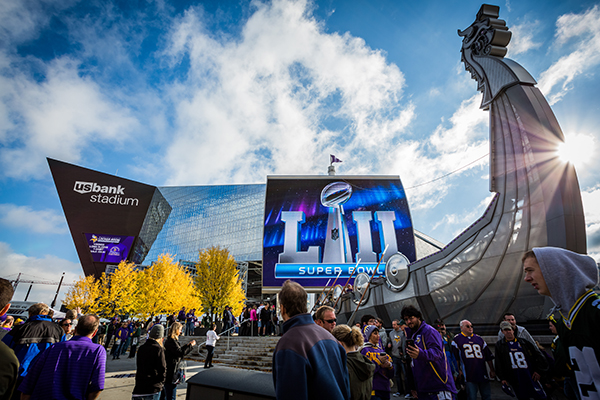Audiovisual Technologies Help Redefine the Modern Fan Experience

Photo Credit: Harrison Barden
There was a time when fans went to a sporting event to watch the game. Today, however, the game represents just one facet of a larger, more engaging experience. Leading venues are leveraging audiovisual technologies to create a new kind of immersive fan
experience, one that is helping to reaffirm the importance of the stadium in modern sports. From shape-defying high-definition displays and data-driven digital content, to state-of-the-art projection mapping, and — yes —augmented and virtual
reality, game day experiences are evolving.
“Since the advent of the television,we’ve been monitoring the in-home experience to best ensure that our arena experience always remains one step ahead of it,” says Tom Wilson,President
and CEO of Olympia Entertainment. “So as home technology gets better, we continuously look to create certain ‘wow’ moments that give our fans something they can only feel in our arena — and audiovisual technology helps us create
these moments.”
To get fans off the couch and in the door, venues understand that they must offer more than just a game; they need to deliver a compelling experience— and new audiovisual technologies are the foundation.
When Detroit’s Little Caesars Arena opened in September 2017 as the new home of the NHL Red Wings and NBA Pistons, it debuted visual innovations designed to enhance the fan experience. One of the most striking additions is a system of laser
projectors that throw imagery and motion video onto the court or ice rink.
Little Caesars Arena is also using a one of-a-kind video system composed of 12 laser projectors to cast floor-to-ceiling content on its “jewel skin,”
a 600-foot long metal-panel canvas that runs along the Via, an enclosed, street-level concourse that surrounds the arena with restaurants, concessions, a team store and endless amenities. This unique feature has a massive impact with fans,and it gives
the venue’s graphic artists more creative flexibility to generate engaging visuals.
Before the NFL’s Minnesota Vikings moved into the new $1.1 billion U.S.Bank Stadium at the start of the 2016 NFL season, the team's old home
at the Metrodome featured what Vikings Vice President of Content and Production Bryan Harper referred to as “postage stamp-sized” display boards.
In contrast, the new stadium has a 68-foot-high by 120-foot-wide videoboard in
the west endzone and a 51-foot high by 88-foot wide board in the east endzone. The screens are hung as low as possible to provide a more engaging fan experience.
“By positioning expansive video boards in low proximity locations surrounding
the seating bowl, fans feel like they’rein the middle of the action,” Harper says. “We invested in both high-pixel quality video boards and camera production equipment to produce a completely unique and immersive game-day experience
that our fans can only enjoy in the venue.”
The old lure of peanuts and Cracker Jacks has been replaced by immersive audiovisual experiences that thrill fans as much as a last-second victory.Teams and venue operators increasingly
recognize that the in-stadium fan experience must rise to a level that cannot be replicated at home. A growing array of audiovisual and digital technologies are empowering stadiums to do just that.




